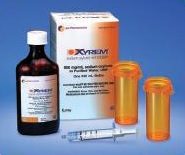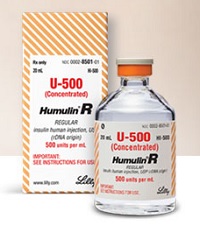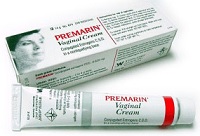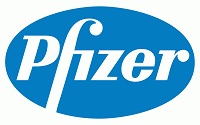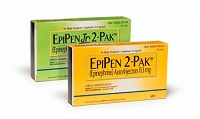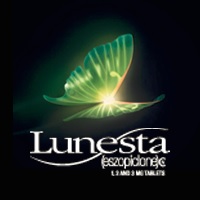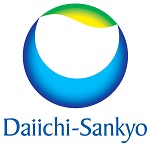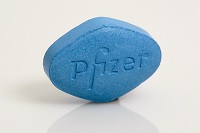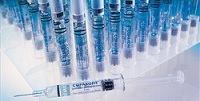 Drugmakers raise U.S. prices to make more money. This isn't a surprise to anyone. It's a basic business strategy, and the U.S. market is among the few where pharma companies still have considerable pricing power. But thanks to a steady flow of expensive new cancer therapies--and a public brouhaha over the cost of next-gen treatments for hepatitis C--drug prices are on center stage.
Drugmakers raise U.S. prices to make more money. This isn't a surprise to anyone. It's a basic business strategy, and the U.S. market is among the few where pharma companies still have considerable pricing power. But thanks to a steady flow of expensive new cancer therapies--and a public brouhaha over the cost of next-gen treatments for hepatitis C--drug prices are on center stage.
Prominent cancer doctors have balked at adopting a new Sanofi ($SNY) drug, Zaltrap, because they decided its benefits weren't worth the cost. Pharmacy benefits managers, notably Express Scripts, have nixed drugs from their formularies in favor of competing--and less expensive--options. And Gilead Sciences' ($GILD) pricing poster child Sovaldi has private payers and government programs so spooked, they're considering limiting its use to the sickest patients, at least until they can use soon-to-be-approved rivals to negotiate better pricing.
Though the spotlight has picked out these few prominent cases, price hikes are happening all over. Drugmakers hike prices to offset patent losses on other meds. To milk an aging product for all it's worth before its patent expires. Or simply because they can: Last year, as U.S. drug spending dropped a couple of percentage points, Novo Nordisk ($NVO) and Sanofi--among others--raised prices on some products, thinking the market could bear it.
But which price tags are changing most? Bloomberg enlisted DRX, a drug-data firm, to find out; you can read the news service's coverage here. We thought we'd look into the products at the top of the list, to see how and why their prices are leaping. Some of the biggest hikes are for products you don't hear much about--specialty meds, such as Jazz Pharmaceuticals' ($JAZZ) narcolepsy treatment Xyrem. Others are mass-market, primary care products, such as Daiichi Sankyo's blood pressure pill Benicar. Any pricing examples you find most egregious--or most justified? Let us know. --Tracy Staton (email | Twitter) | Carly Helfand (email | Twitter) | Emily Wasserman (email | Twitter)
1. Xyrem (narcolepsy symptoms) -- Jazz Pharmaceuticals
2. Humulin (diabetes) -- Eli Lilly
3. Premarin (menopause symptoms) -- Pfizer
4. EpiPen (anaphylaxis) -- Mylan
5. Lunesta (sleep disorders) -- Sunovion
6. Benicar (high blood pressure) -- Daiichi Sankyo
7. Lantus (diabetes) -- Sanofi
8. Viagra (erectile dysfunction) -- Pfizer
9. Gleevec (leukemia) -- Novartis
10. Copaxone (MS) -- Teva
|
The 10 biggest drug price increases since 2007 |
|||
|
Treats: Narcolepsy symptoms Xyrem makes up more than half of Jazz Pharmaceuticals' ($JAZZ) annual revenue, and the company has been pumping up those sales by hiking Xyrem's price--repeatedly. This year, Xyrem costs $19.40 per 1-milliliter dose, up from just $2.04 in 2007, Bloomberg's data shows. And growing Xyrem sales to $569 million in 2013 was mostly a function of the year's price hikes, the company's annual report states. Volume grew by 12% last year, while the price went up by almost one-third. One way Jazz has kept patients coming is by offering copay assistance to insulate them from the price hikes. And now, the company is looking forward to developing a Xyrem follow-up: The company inked a $120 million deal for worldwide rights to a tweaked version--with easier dosing--under development by Concert Pharma. --Tracy Staton Back to top |
|
||
|
Treats: Diabetes As a biologic drug, off-patent diabetes blockbuster Humulin doesn't face generic competition despite the fact that it hasn't had patent protection in about 14 years. But in 2012, other factors were taking their toll on sales. The drug faced formulary exclusion, the termination of an agreement with Walmart and a declining market for human insulin. Thanks to price hikes, however, Humulin sales in the U.S. swelled by 1% that year, and in 2013 the growth was even more pronounced, tallying 14%. That top-line increase in the U.S. boosted Humulin's overall 2013 sales by 6%, despite decreased demand in the U.S. and exchange rate hits overseas. Lilly ($LLY) needed it, too: Still recovering from Zyprexa's patent expiration in 2011, the company lost its IP shield on top-seller Cymbalta in December. --Carly Helfand Back to top |
|
||
|
Treats: Menopause symptoms Premarin vaginal cream is one of several formulations of the hormone treatment Pfizer ($PFE) sells, and the franchise has been holding its own over the past several years, despite worries about the safety of hormone-replacement therapy--and competition from prescription and "natural" remedies alike. And that's a good thing for Pfizer, because it's among the company's 10 best-selling product groups. Price increases have helped. From a cost of $2.25 per gram in 2007, Premarin cream has climbed to $8.04 per gram this year, with the biggest increase--68%--in 2012. According to Pfizer, the vaginal cream has been a better seller than other Premarin formulations recently, with demand increasing along with its price. Now, it has another competitor, and this one from within Pfizer itself. The company won FDA approval for Duavee, used to treat menopause symptoms and prevent osteoporosis, in October. --Tracy Staton Back to top |
|
||
|
Treats: Anaphylaxis Branded drugs are not the name of Mylan's ($MYL) game, but one of the company's biggest boosts has come from its EpiPen epinephrine autoinjector. The company saw a 13% jump in specialty drug sales for 2013, to $176 million. And that's a number Mylan largely attributed to its EpiPen product. For some 25 years, Mylan all but owned the market for epinephrine injections. Then, last year, Sanofi ($SNY) launched a competing product, Auvi-Q, that's shaped like a rectangle--rather than a pen--and issues automated voice instructions to help users inject themselves. Mylan quickly went on the offensive, stepping up marketing of its device and launching anaphylaxis awareness campaigns. Maybe the competition is why EpiPen's price has held at 2013 levels--$182.35 per device--rather than increasing by a quarter or more as it had the previous couple of years. --Emily Wasserman Back to top |
|
||
|
Treats: Sleep disorders Sunovion is not ready to turn the lights out on Lunesta. It may face plenty of competition, but it's still a half-billion-dollar-plus product. The drugmaker launched the blockbuster insomnia med in 2005 with a $100 million ad budget and followed up with another $320 million advertising push the next year. Worldwide sales quickly grew, surpassing $600 million by 2010, according to EvaluatePharma. Now, as more drugmakers enter the arena--and new generics offer a sizable cost break--the competition is taking its toll. Generic Ambien CR in particular poses a threat to Lunesta's profitability. But the company continues to challenge copycat versions of its best-selling drug, extolling Lunesta's virtues to an expanding customer pool. --Emily Wasserman Back to top |
|
||
|
Treats: High blood pressure Benicar's patent doesn't expire till 2016, but it's already feeling the pressure from generic drugmakers that think they can push their copies to market sooner. Daiichi Sankyo has been hiking its price every year, perhaps with that patent cliff deadline in mind. Or maybe it's the fact that it's facing generic versions of an increasing number of rival angiotensin receptor blockers. These days, Benicar runs $5.95 per pill, up from $2.25 in 2007. To insulate patients from the price increases, Daiichi offers monthly copay assistance that caps costs at $25 for eligible patients. Unfortunately for Daiichi, the price increases and copay cards haven't been enough to keep Benicar's sales growing. The drug has slipped year after year, dropping to $3.1 billion in global 2013 sales, from $3.24 billion in 2012, a decrease of 5%. --Tracy Staton Back to top |
|
||
|
Treats: Diabetes Lantus is the best-selling diabetes drug in the world, and Sanofi ($SNY) isn't ready to give up that title. Luckily for the French drugmaker, a recent drop in U.S. drug spending eased some pressure on insurers and opened the door for Sanofi and others to up their prices on in-demand products like this one. Last April, the company opted for a 14.9% increase on 100-ml Lantus vials, raising them to $16.64 per ml, and a 9.9% increase on Lantus SoloSTAR injection pens, which reached $18.38 per ml. And it followed that up with another jump in August. According to Bloomberg, 2013's vial price ended at $22.95 per ml. Like many of its Big Pharma peers, Sanofi hasn't stopped at price hikes to protect the moneymaker: It's developing a successor drug that so far looks promising, and it's also warded off a potential rival from Eli Lilly with an infringement lawsuit. --Carly Helfand Back to top |
|
||
|
Treats: Erectile dysfunction Few drugs carry the name recognition and sheer selling power of Viagra--and Pfizer ($PFE) wants to keep it that way. The company's best-selling erectile dysfunction drug brought in $1.8 billion in sales last year, 3.6% of Pfizer's total revenue. Counterfeits threaten Viagra's market prominence, but its $34-per-pill price tag could be enough to keep sales up in the short term, despite the imitators. Pfizer is also keeping an eye on the future, as its oft-copied ED drug nears the end of its exclusivity. With Lipitor recently falling over the patent cliff, the drugmaker is holding onto its tiny blue diamond for dear life. Viagra has lost patent protection in Europe already, taking an 11% bite out of sales soon after. Meanwhile, Pfizer is fighting South Korean copycat Hanmi in court--and thanks to a favorable patent ruling, has exclusivity in the U.S. till 2019. --Emily Wasserman Back to top |
|
||
|
Treats: Blood cancers Gleevec has racked up a host of new uses since 2001, but the revolutionary blockbuster is inching toward the end of its patent life. Set to face generic competition in 2015, the Novartis med could face rivals running at as little as $40 or $50 per month, rather than the couple thousand charged for the brand. Novartis ($NVS) has a plan to keep customers within its franchise, however: follow-up drug Tasigna, which is already building market share. The Swiss pharma has touted Gleevec's successor as superior to the original, conducting discontinuation trials. But until patients make the switch, their Gleevec is going to cost more than it used to. Double-digit increases have been the pattern for each of the last 5 years. --Carly Helfand Back to top |
|
||
|
Treats: Multiple sclerosis Teva ($TEVA) was already ill-equipped to cope with the 2015 loss of patent protection for top-seller Copaxone when a U.S. court decided the Israeli drugmaker would face that challenge much earlier than it had anticipated. A federal judge upturned a key patent on the drug, bumping that judgment day forward to this month. The Supreme Court has since decided to hear Teva's appeal, but it will be months before that process begins. So in the meantime, the company is doing what it can to milk Copaxone for all it's worth, with prices rising as much as 27% at a time since 2007. And it's also racing to switch patients to a new, long-acting version. --Carly Helfand Back to top |
|
||
